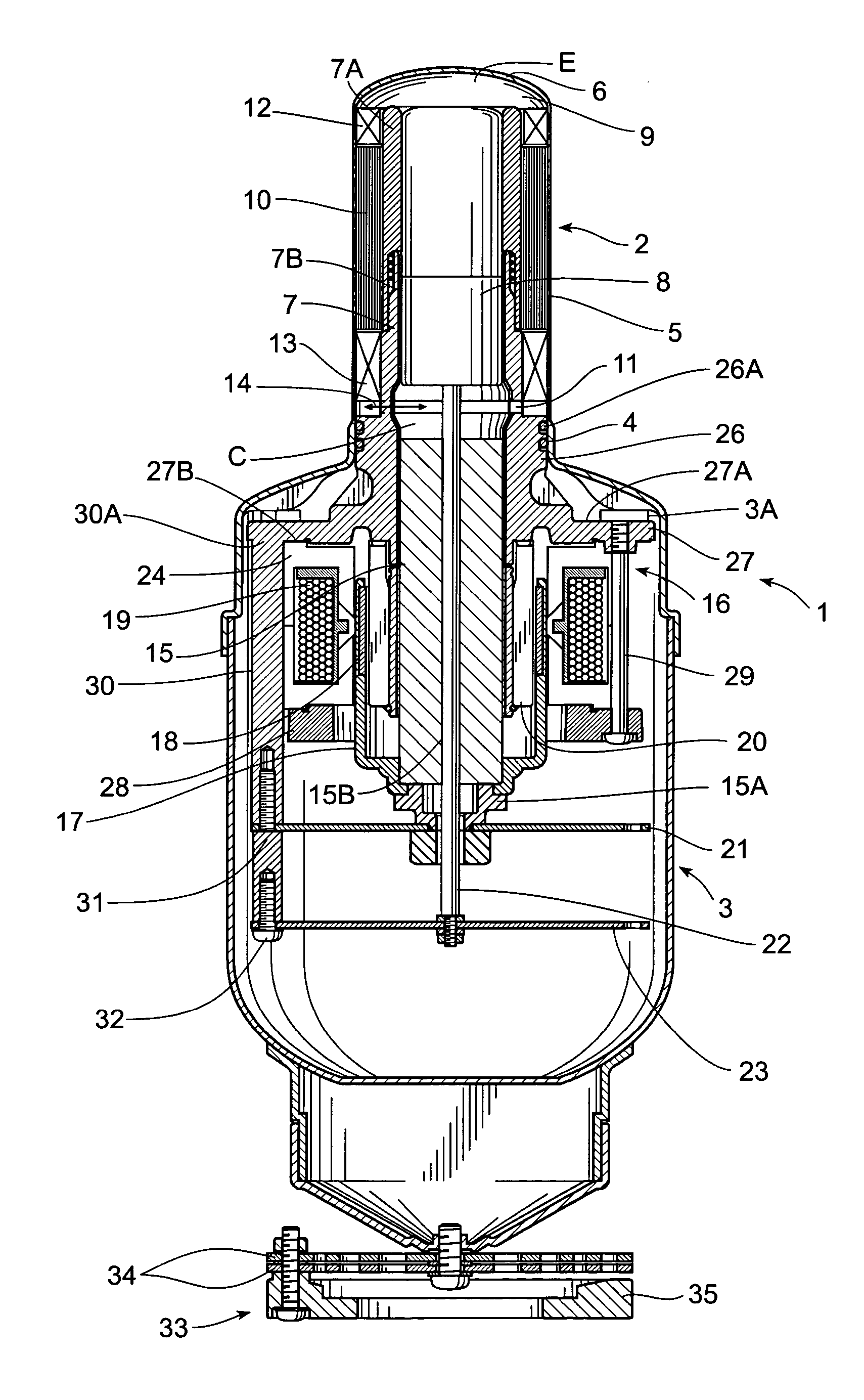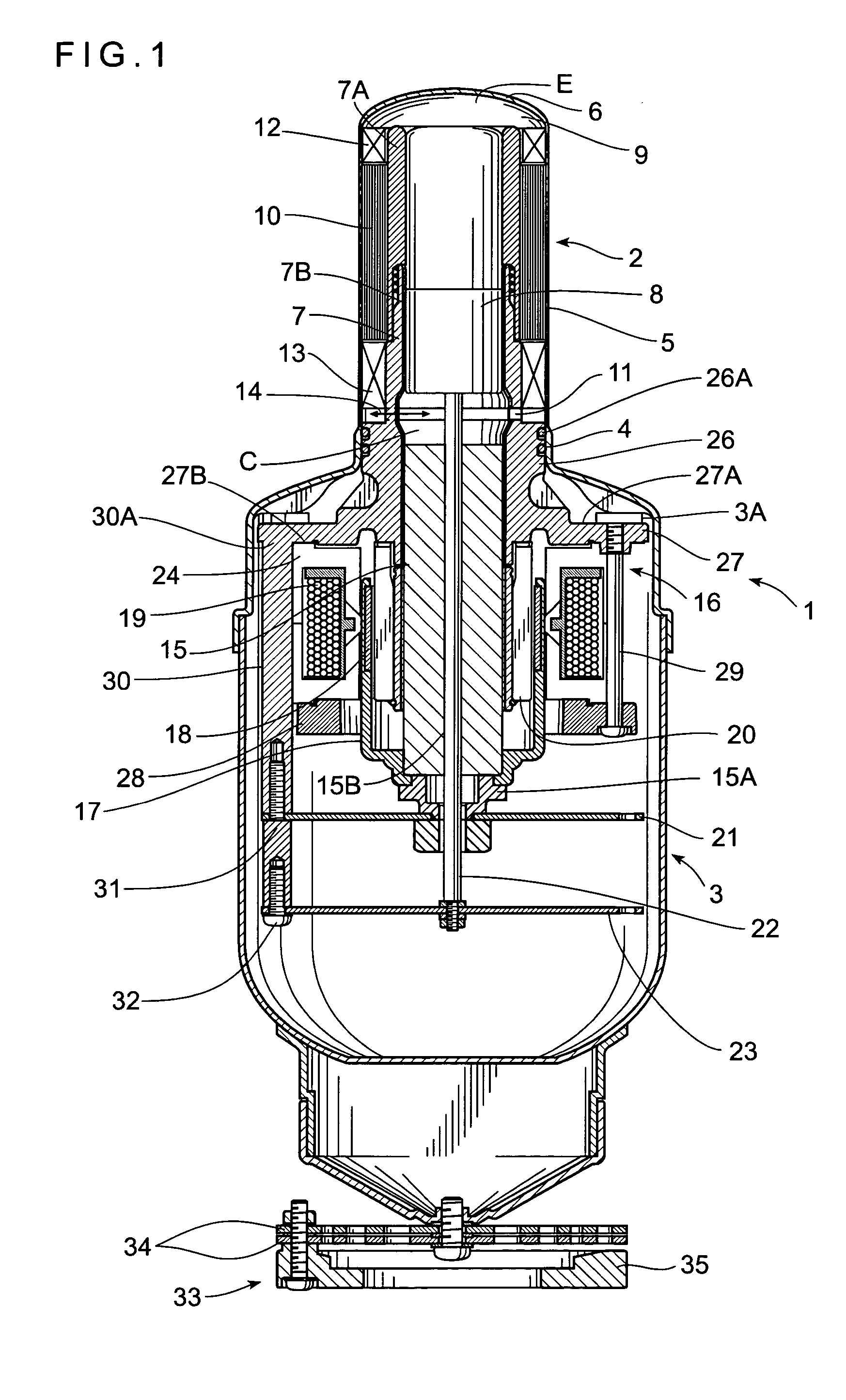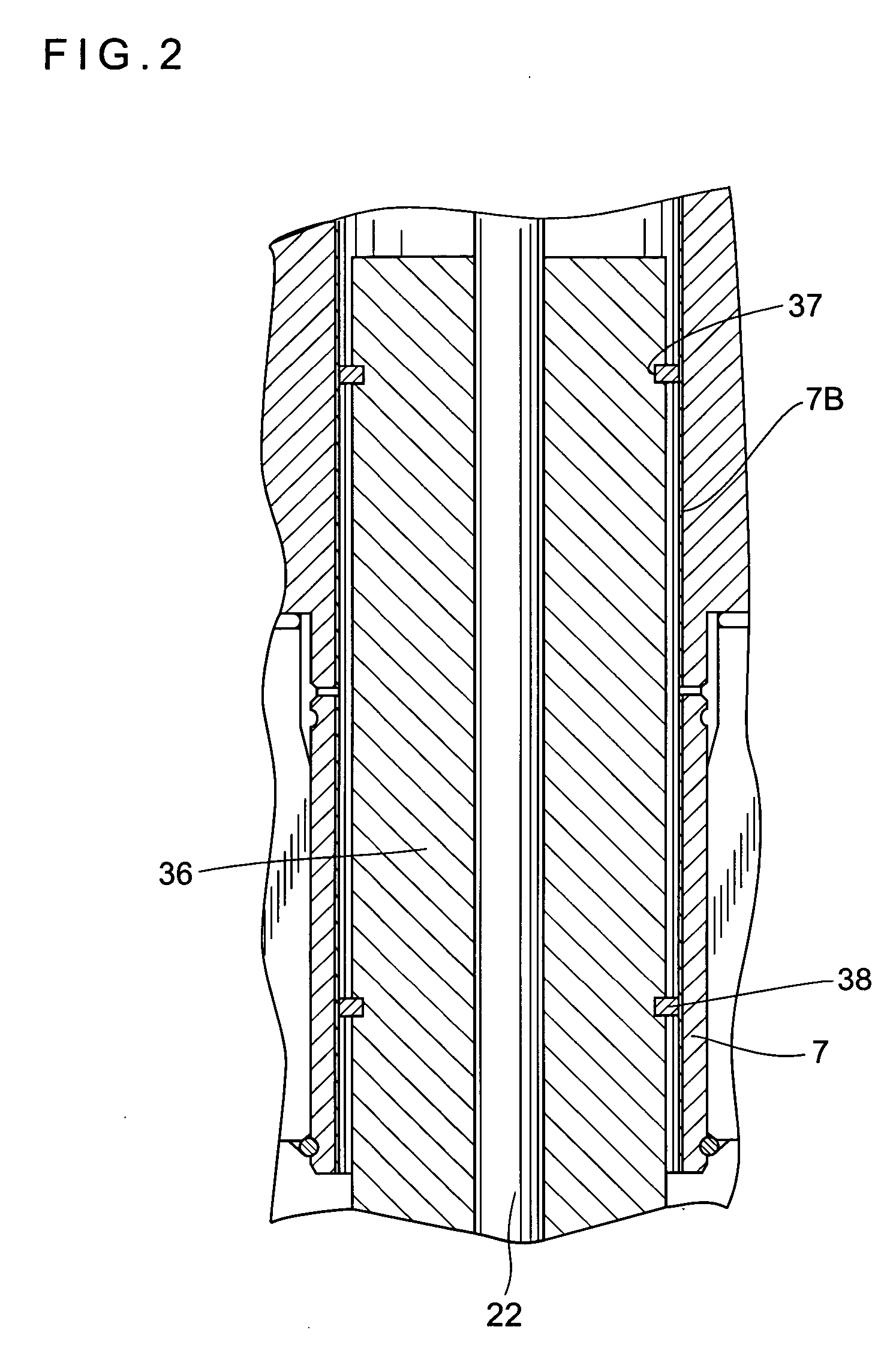Stirling cycle engine
- Summary
- Abstract
- Description
- Claims
- Application Information
AI Technical Summary
Benefits of technology
Problems solved by technology
Method used
Image
Examples
first embodiment
[0033] In FIG. 1, reference number 1 denotes a casing which comprises: a cylindrical portion 2 formed in a substantially cylindrical shape; and a main body portion 3 also formed in a substantially cylindrical shape. The cylindrical portion 2 is made from, for example, stainless steel and comprises a proximal portion 4, an intermediate portion 5 and a distal portion 6, while these three portions are integrated with one another.
[0034] Inside the cylindrical portion 2, a cylinder 7 extending to the inside of the main body portion 3 is coaxially inserted. An extended cylinder portion 7A which is a discrete portion from the cylinder 7 is coaxially connected to the distal end of the cylinder 7 adjacent to the distal portion 6. The cylinder 7 locating adjacent to the main body portion 3 is integrally formed with mounts 26, 27 (described later) and a plurality of connecting arms 30 (also described later) by casting such as die casting, using a metallic material such as aluminum, and the in...
second embodiment
[0043] Next, a second embodiment of the present invention will now be described. FIG. 2 is a cross sectional view showing a part of a piston of a Stirling cycle engine according to the second embodiment. Meanwhile, the Stirling cycle engine of this embodiment employs the same structure as that of the first embodiment except a piston 36, and thus the same reference numbers will denote the same structural portions, and detailed explanations thereof will be omitted. In this embodiment, two grooves 37 are formed along the outer periphery of the piston 36 on the outer surface thereof, while piston rings 38 made from PPS are fitted in the grooves 37, and thus the piston rings 38 slide on the inner peripheral surface of the cylinder 7 when the piston 36 reciprocates. As with the first embodiment, PPS is an engineering plastic having fine mechanical strength and formability, accordingly dimensional stability, mechanical strength and abrasion resistance are further added by mixing discontinu...
third embodiment
[0046] Next, a third embodiment of the present invention will now be described. FIG. 3 is a cross sectional view showing a part of a piston of a Stirling cycle engine according to the third embodiment. Meanwhile, the Stirling cycle engine of this embodiment employs the same structure as that of the first embodiment except a piston 39, and thus the same reference numbers will denote the same structural portions, and detailed explanations thereof will be omitted. In this embodiment, two sleeves 40 (sliding-contacting means) are passed through a rod-through-hole 39A of a piston 39, while the sleeves 40 and the rod 22 are to slide. The sleeves 40 are made from PPS, an engineering plastic having fine mechanical strength and formability, to which are added dimensional stability, mechanical strength and abrasion resistance by mixing discontinuous fibers of carbon, while lubricity is added by adding solid lubricity agent such as molybdenum disulfide, PTFE or the like.
[0047] According to th...
PUM
 Login to View More
Login to View More Abstract
Description
Claims
Application Information
 Login to View More
Login to View More - R&D
- Intellectual Property
- Life Sciences
- Materials
- Tech Scout
- Unparalleled Data Quality
- Higher Quality Content
- 60% Fewer Hallucinations
Browse by: Latest US Patents, China's latest patents, Technical Efficacy Thesaurus, Application Domain, Technology Topic, Popular Technical Reports.
© 2025 PatSnap. All rights reserved.Legal|Privacy policy|Modern Slavery Act Transparency Statement|Sitemap|About US| Contact US: help@patsnap.com



